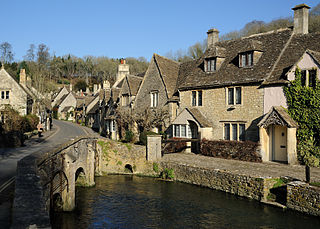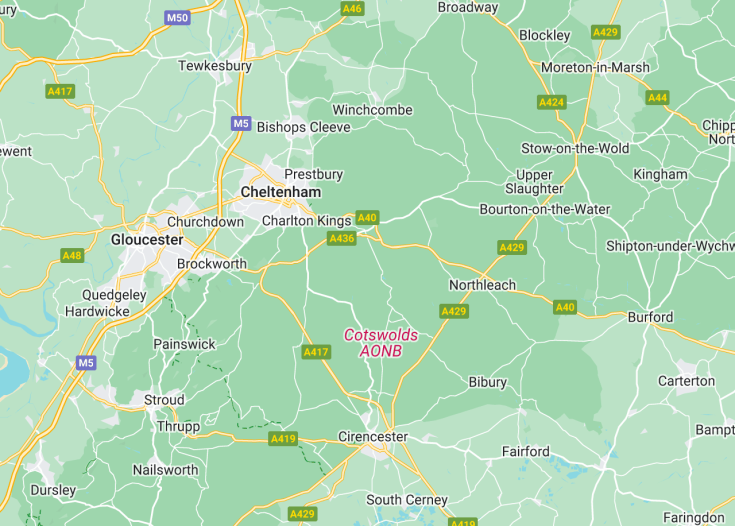The Cotswolds, stretching across several counties in England, including Gloucestershire and Oxfordshire, embodies quintessential British charm. This picturesque area is distinguished by its rolling hills, historic villages, and rich medieval churches built from distinctive honey-colored stone. Known for its breathtaking landscapes and traditional English countryside, the Cotswolds offers a wealth of walking trails, artisanal shops, country houses, and gardens. The region’s tranquil atmosphere and stunning scenery attract visitors seeking a peaceful retreat or an immersive cultural experience in rural England.
Don’t miss exploring the iconic thatched cottages and historic market towns like Chipping Campden and Stow-on-the-Wold for a genuine feel of old England.
Consider visiting during the spring or early summer when the Cotswolds’ gardens are blooming with flowers, making the landscapes even more picturesque.
Top things to do & see in Cotswolds
Select the following sights and activities to discover best tickets and tours available in Cotswolds.
Cotswolds: Enchanting Rural Escape
| Country | England (United Kingdom) |
| Time in Cotswolds | GMT+0 |
| Language spoken | English |
| Population | 139,000 (Office for National Statistics, 2022) |
| Currency | Pound Sterling (£, GBP) |
| Airports |
|
The Cotswolds, a picturesque area in the heart of England, boasts rolling hills, charming villages, and historic estates, making it a quintessential British rural retreat. Known for its distinctive honey-colored stone architecture and verdant landscapes, this region spans across several counties, including Gloucestershire and Oxfordshire, and is popular for walking, cycling, and exploring quaint townships.
Significant for its extensive history, the Cotswolds became prosperous during the medieval wool trade, which is reflected in the splendid churches and merchant houses built with the wealth of the time. Today, it holds a World Heritage status and attracts those looking for scenic beauty, tranquility, and a touch of traditional English culture. Celebrated events such as the ‘Cotswold Olimpicks’ and numerous literary and music festivals pepper the annual calendar, drawing visitors from all over the world.
Where is Cotswolds?
Located in south-central England, the Cotswolds covers an area that includes parts of six counties, mainly Gloucestershire and Oxfordshire.
Distances:
| Route | Distance by car | Time by car |
|---|---|---|
| London to Cotswolds | 93 miles | Approx. 2 hours |
| Bristol to Cotswolds | 48 miles | About 1 hour |
| Oxford to Cotswolds | 29 miles | 45 minutes |
What is Cotswolds famous for?
Renowned for its bucolic landscapes, the Cotswolds region is famous for its picturesque villages like Bibury and Castle Combe, lush countryside, and historical significance stemming from the medieval wool trade.
History
[
Ancient Origins (Prehistory-10th Century)
The Cotswolds region, known for its distinctive rolling hills and verdant landscapes in England, has been inhabited since prehistoric times. Early human activity is evidenced by the numerous megalithic tombs and ancient hill forts that pepper the landscape. These early inhabitants exploited the rich natural resources of the area, including its fertile soils and abundant wildlife, which provided a robust basis for the development of agriculture.
Medieval Prosperity (11th Century-15th Century)
Following the Norman conquest of England, the Cotswolds experienced significant growth and prosperity due to the wool trade. The region’s high-quality wool was highly sought after across Europe, particularly from the wealthy Flemish weavers. This period saw the construction of awe-inspiring churches and manor houses, funded largely by the wealth generated from the wool industry. The architectural style from this era, characterized by its use of locally sourced, golden-colored limestone, gives the Cotswolds its distinctive and charming aesthetic.
Industrial Decline and Rural Shift (16th Century-19th Century)
The advent of the Industrial Revolution saw a shift in the economic fortunes of the Cotswolds. As the focus of textile production moved to the northern cities, which had better access to water and coal, the region’s wool industry declined drastically. This era marked a transition to a more pastoral economy with an emphasis on agriculture and market town trades, setting the stage for the bucolic character that the area is celebrated for today.
Modern Appeal (20th Century-Present)
In the 20th century, the Cotswolds became recognized for its historic value and natural beauty, leading to its designation as an Area of Outstanding Natural Beauty (AONB) in 1966. Today, it is a popular tourist destination, attracting visitors worldwide who seek its picturesque villages, historic sites, and tranquil countryside. The region’s appeal is enhanced by a contemporary renaissance in local crafts, artisan products, and farm-to-table gastronomy, making it a vibrant example of rural heritage adapting to the modern age.
Visit Cotswolds
What to see and do in Cotswolds, England (United Kingdom)
Explore the natural beauty and historic charm of the Cotswolds with its array of attractions and activities. Visit the iconic Cotswold villages like Bibury, known for Arlington Row, a picturesque street of ancient cottages. Discover the majestic Blenheim Palace, a World Heritage Site offering insights into Britain’s aristocratic past.
- Walk along the Cotswold Way, a 102-mile trail that offers spectacular landscapes and serene nature.
- Explore the historic market towns like Stow-on-the-Wold and Chipping Campden, which feature medieval architecture and lively local markets.
- Visit local art galleries and museums to appreciate regional arts, crafts, and historical artifacts.
- Enjoy a variety of outdoor activities like cycling, horse riding, and bird watching in the extensive natural reserves and parks.
Festivals and Events in Cotswolds
The Cotswolds hosts numerous events throughout the year, reflecting its rich culture and community spirit. Notable events include the Cotswold Olimpick Games, a quirky sports event held annually in June featuring traditional games, and the Cheltenham Literature Festival in October, one of the oldest and most prestigious literary festivals globally.
Best time to visit Cotswolds
The best time to visit the Cotswolds is during the spring (late March to early June) and autumn (September to October) when the weather is mild, and the natural scenery is at its most vibrant. These periods provide the perfect backdrop for hiking, photography, and enjoying the quaint townships and countryside.
Is Cotswolds worth visiting?
Indeed, the Cotswolds is well worth visiting for anyone appreciating historical depth, natural beauty, and cultural richness all nestled into one. Its network of charming villages, stunning architectural feats from the medieval era, and vibrant cultural scene offer a timeless allure. Whether you are a history enthusiast, nature lover, or cultural explorer, the Cotswolds presents a uniquely enriching experience that transcends the typical tourist itinerary.









